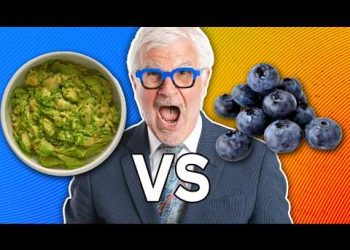The Struggle with Stubborn Fat
If you’ve been hitting the gym and monitoring your calorie intake yet still find that stubborn belly fat clinging to your body, you may be interested in hearing about a new approach to help expedite fat loss. The key may lie in the consumption of a simple tablespoon of specific ingredients that can catalyze fat burning.
Understanding Mitochondrial Role in Fat Loss
This fat-burning technique revolves around the enhancement of mitochondrial biogenesis, which entails creating new mitochondria. Known as the powerhouse of cells, mitochondria play a crucial role in energy creation — increasing your metabolic rate and helping burn more fat even while at rest.
Ingredients That Burn Fat Effectively
The video discusses seven pivotal ingredients that can rev up your fat-burning process. Each ingredient enhances mitochondrial function, turns undesirable white fat to a more metabolically active beige and brown fat, is insulin-friendly, and reduces inflammation—all contributing to effective fat loss.
Medium Chain Triglycerides (MCT) Oil
First on the list is MCT oil, particularly C8 or caprylic acid, which supports the production of ketones. These molecules enhance mitochondrial biogenesis, creating more energy and boosting metabolic rate. MCT oil can be easily incorporated into your diet through coffee, tea, or taken directly.
The Benefits of Resveratrol
Resveratrol, found naturally in grapes and red wine, serves as a potent polyphenolic compound that not only supports mitochondrial health but also enhances the function of longevity genes. Given its anti-inflammatory and antioxidant properties, it is recommended to consume it in powder form daily for effective fat loss.
Apple Cider Vinegar for Glucose Management
For those struggling with blood sugar management, apple cider vinegar can have a significant impact. Its acetic acid component helps increase metabolism, curb cravings, and inhibit fat storage. Consuming it before meals can stabilize blood sugar levels, optimizing the fat-burning process.
Utilizing Extra Virgin Olive Oil
Cold-pressed extra virgin olive oil isn’t just good for cardiovascular health; it also aids in reducing inflammation and promoting fat loss. Studies highlight its capacity to keep cholesterol levels balanced while its healthy fats support enhanced metabolism and weight management.
The Power of Capsaicin
Capsaicin, the active compound in chili peppers, stimulates thermogenesis (heat production), which increases calorie burn. Research indicates that it can significantly reduce abdominal fat by increasing fat oxidation and suppressing appetite.
Introducing Grains of Paradise
Grains of Paradise is a lesser-known spice that shows promising results in increasing body metabolism and energy expenditure. It facilitates the conversion of white fat to brown fat, effectively aiding in fat loss while also offering safe weight management options.
Conjugated Linoleic Acid (CLA)
Lastly, CLA, found in meat and dairy products, has been studied for its potential in reducing body fat through inhibiting fat storage. It encourages breaking down existing fat stores while improving lean body mass, making it a beneficial supplement for those targeting fat reduction.
Embracing Biohacks for Enhanced Results
To complement these ingredients, experimenting with biohacks like cold and heat exposure, or red light therapy can enhance metabolic rate and fat browning. These methods stimulate mitochondrial efficiency and contribute to sustainable fat loss over time.











